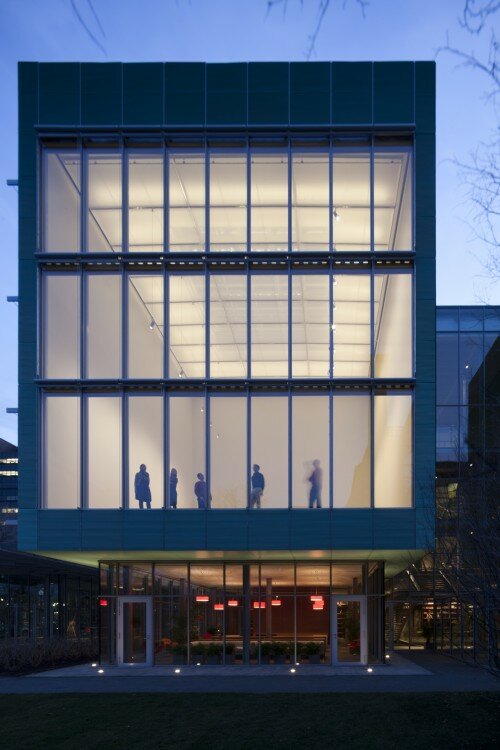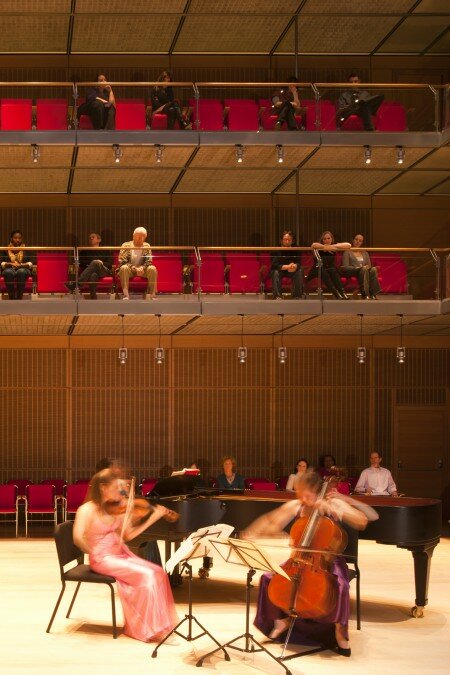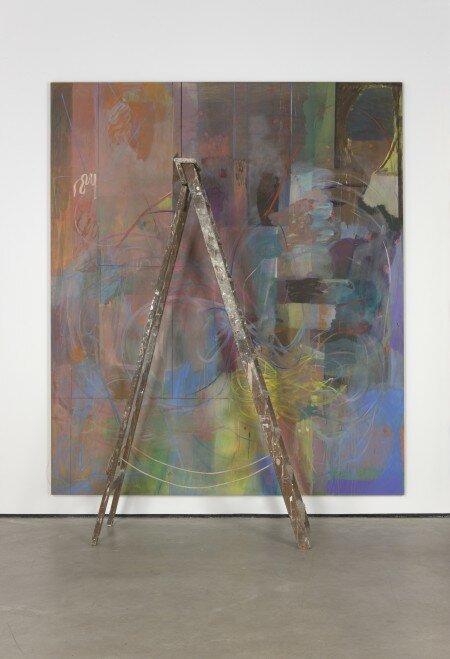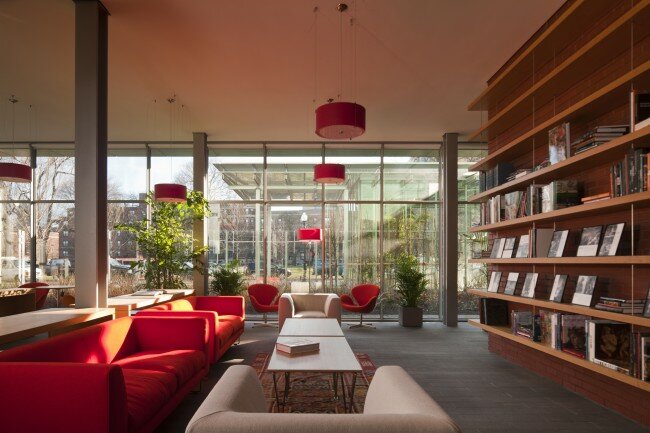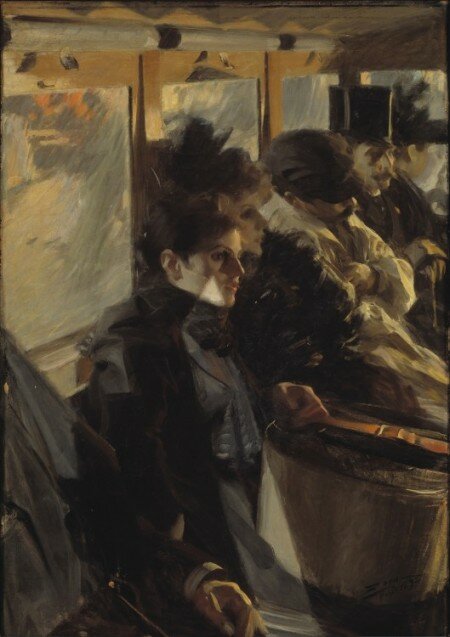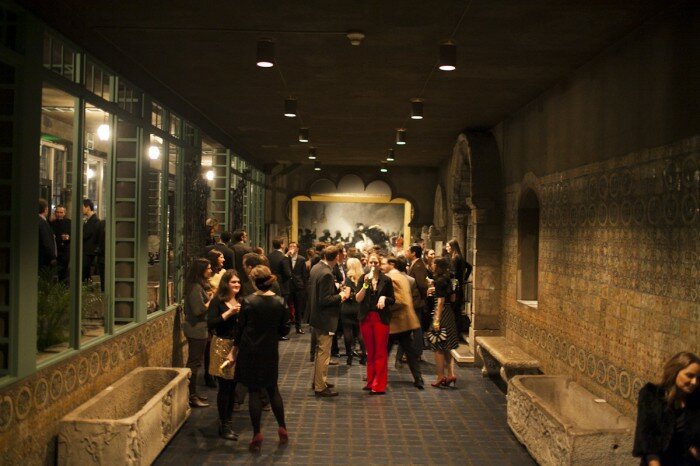(photo courtesy of the Isabella Stewart Gardner Museum)
By now I’m sure you’ve had a chance to experience, or at least catch the buzz surrounding the unveiling of the new Renzo Piano Wing at Boston’s iconic Isabella Stewart Gardner Museum.
Last month I was fortunate enough to attend the opening celebration of the new wing and restored historic galleries at their After Hours Opening Bash. Seeing the space after so many months of closure, reminded me why The Gardner is one of my favorite museums. An invaluable escape from the bustle of the city.
And while everyone seems to be caught up in discussing the aesthetic attributes of the new building’s structure, I found a different aspect of the wing to be intriguing, its potential.
——————————————————————————
►►The Rooms
——————————————————————————
Every room is brimming with potential. The potential for groundbreaking exhibits, a platform for world renowned musicians in their new concert space, a backdrop for stunning events, behind-the-scenes workshops, and the list goes on.
Calderwood Hall
On this night, the 296-seat, 6,000sq ft performance hall resounded with the voices of Muscles of Joy, a Scottish septet that has been described as “vocal led, psych-folk, art-rock, experimental, and tribal-pop.”Aside from the live music happening before me, I was taken aback by the structure of the room with three balcony levels of front-row seating organized around a central stage. With a skylight in the roof, this arrangement affords visitors a distinct visual and acoustical experience. Gone are the days of being stuck sitting behind Lurch Addams at your favorite concert.
I look forward to returning to Calderwood Hall to enjoy another breathtaking performance. You can tell the ISGM has taken great care and detail in organizing their programming. Upcoming events include the Complete Beethoven Cello Sonatas, Chamber Music Society of Lincoln Center, as well as Jazz Performances and Celebrating John Cage’s 100th (composer), during The Gardner’s After Hours events which take place on the third Thursday of every month.
——————————–
The Special Exhibition Gallery
The grandeur of the gallery, like many rooms in the new wing, is a challenge to photograph. I had to stand with my back up against a wall, hands to my chest, to get a photo that looked like this:
Abysmal.
But, in my camera’s defense, it is difficult to capture all 2,000 sq ft of the room’s majesty, three times the amount of exhibition space as the former special exhibition gallery in the historic Museum. The three story room is equipped with a movable translucent ceiling(adjusts to 12′, 24′, 36′ high) which offers increased flexibility for installations as well as options for managing natural light in the space. The gallery space also includes an ante-gallery for more light-sensitive objects.
(artifacts that can be found in the ante-gallery. Especially love the bottom image of a letter to Mrs. Gardner from an artist)
On this occasion the ceiling was maxed out at 36′ to accommodate the larger works of Scottish born artist-in-residence, Victoria Morton. Her exhibition “Tapestry (Radio On)”(on view through May 28th) is the artist’s first solo show in an American Museum and features densely detailed canvas pieces alongside functional objects such as a ladder, drum or dress in order to create “an environment that expands the space of the paintings and adds a performative dimension.”
Morton wants to make Abstract Art that is connected to everyday life,” said Pieranna Cavalchini, Gardner Museum Curator of Contemporary Art. “This is her ideal kind of painting. It is emotional. To Morton, cutting up an apple can mean the same thing as putting paint on canvas. It is an assured and instinctive gesture. Visitors will see connections between Morton’s work and the Gardner collection, particularly when exploring the contest of the unique and surprising adjacencies present in Isabella Stewart Gardner’s continuous installation.
——————————-
The Richard E. Floor Living Room
The 1,100sq foot Living Room was inspired by a project of the same name that was created for the museum in 2000 by Artist-in-Residence Lee Mingwei. The room has been described as having a “domestic aesthetic that echoses the essence of Isabella Gardner’s Palace, where personal and public spaces blend seamlessly.” Furnished with couches, chairs, reading tables and potted plants, the Living Room serves as a warm and inviting orientation space for visitors to learn more about the creative undertakings of the ISGM and the museum’s legacy.
In addition to providing a serene space where visitors can rest, regroup, and contemplate their existence, the Living Room also acts as an educational resource. Every Friday and Saturday from 2-4pm, The Gardner invites a guest host to speak in the Living Room and bring in some of their own objects and artifacts to share with visitors for the afternoon. This initiative ties in nicely with the original mission of the museum, and Mrs. Gardner’s desire to make her own collection available to the public.
You don’t have to be a curator or art historian to show your work in The Living Room. It could be you, or me. Mere plebs. Just think, an outlet for me to share my taxidermied parrot, Alfonso and my collection of funerary photography with the masses!
(The collection of Isabel Meirelles)
———————–
Dorothy Hundley Magee Greenhouse
A functioning greenhouse. In a museum. I’d say that’s a unique touch. For the first time, visitors can walk through the greenhouse to see plants that are being prepared for courtyard display. A landscape classroom within the greenhouse provides the museum landscape and education staff a place to teach using live plants. While the Gardner has always gone to great lengths to incorporate beautiful flowers and plants into the Historic Museum, it was nice to see this same initiative manifesting itself in the new wing as an open and inviting viewing space for visitors to enjoy.
In addition to the above, the Renzo Piano Wing also boasts:
- Two artist apartments above the greenhouse
- State-of-the-art Conservation Labs and Archival/Collection storage areas
- An expanded restaurant, Cafe G and a new museum store
- The Claire and John Bertucci Education Studio that provides an art-making space to complement learning that happens in the galleries
(Artist Cesare Pietroiusti(not pictured) taught attendees how to create beer stained prints using watercolor resist techniques the night of the opening celebration)
——————————————————————————
►►Out With The New, In With The Old
——————————————————————————
(This is probably a good time to mention, there is no photography allowed in the Historic Museum. wink!)
Shifting gears.
So, maybe you haven’t yet had a chance to check out the new wing, let alone the Historic Museum. But, I would be remiss if I created a post about The ISGM without sharing some thoughts/love notes celebrating Mrs. Gardner’s original space.
The hallway connecting the new to the old is shrouded in trees, giving visitors the illusion of walking through a forest. This space also ameliorates the transition from BRIGHT Renzo Piano wing to the quieter and more subdued areas of the Historic Museum.
On this night, the space was anything but quiet as the Courtyard DJ’s bass thumped through my bones. I could only hope that Mrs. Gardner’s artifacts were properly secured to the walls.
But there is something about walking through the shadowy cloisters and emerging onto the magnificent light drenched palazzo courtyard that always gives me chills. Truthfully.
And not to rush things along our virtual tour, but I get the same feeling every time I see John Singer Sargent’s El Jaleo tucked away in an adjacent room.
At the Gardner After Hours events I have noticed that staff seems to set up the bar space in front of Sargent’s masterpiece. I don’t mind this arrangement as I can steal a few moments while waiting on the wineline to admire his work and take in just how commanding the painting is, even when set back far from the madding crowd.
—————————
The Tapestry Room
Upon entering the newly restored tapestry room, it feels as though you have literally stepped back in time. The colorful and finely detailed tapestries on the walls, in contrast to the rich woods adorning this Medieval room, seem to guide you along the decadent space until you reach one of the most commanding fireplaces I have ever seen. I could sit in this room for hours and look forward to one day doing an audio or walking tour of the space. It just feels like a room rich with history and I’m eager to learn more.
A centerpiece of the Museum preservation project is the Tapestry Room, which has been restored to its original glory after being used for 85 years as a contemporary concert hall. As the Museum’s world-class concerts will now take place in the new wing’s Calderwood Hall, the Tapestry Room has been returned to its former configuration to be experienced as a grand tapestry hall. Conservation treatment of the space included the cleaning of its Mercer-tiled floors, restoration of the French medieval stone fireplace, re installation of select art and furniture objects, replacement of historic textiles with reproductions and new lighting.
———————————————————————
►►FLUX. Favorites From The Collection
——————————————————————–
James McNeill Whistler, Harmony in Blue and Silver: Trouville
———————
Anders Zorn, Omnibus
————
Swan
(origin: China circa 1800)
———
Studio of Francisco de Zurbarán, Virgin of Mercy
———————-
Portable Shrine with an Image of Kannon
—————–
Window: Scenes from the Lives of Saint Nicasius and Saint Eutropia
————————-
And finally, another personal favorite of mine…
John Singer Sargent, Mrs. Gardner in White
(Inscribed at upper right: To my friend Mrs. Gardner / John S. Sargent)
Made just two years before her death, this watercolor depicts Gardner after she suffered a debilitating stroke at the age of eighty-two. Swaths of fabric envelope her figure, but cannot disguise her physical frailty. On the other hand, the piercing gaze attests to Gardner’s resilient spirit and curiosity. Sargent’s sensitivity to his subject no doubt stemmed from his long and close friendship with Gardner. Sargent made the portrait in the Macknight Room at Fenway Court on 14 September 1922 and presented it to her twelve days later.
——————————————————————————
►►Et Al.
——————————————————————————
And the rest..
(Living Room canaries must have taken a cigarette break during the opening)
Empty Frames?

(The Concert, Johannes Vermeer)
With all this talk of celebrations I don’t mean to be a buzzkill, but I have to state the obvious. The Isabella Stewart Gardner Museum is the site of the biggest art heist in history! 13 pieces of work went missing in 1990 and the case is still unsolved to this day.
I love learning about crimes, mob activity, mysteries, who-dun-it sort of fare and recently had a chance to watch the documentary, Stolen on Netflix. The film delves into the nitty gritty of the case, the seedy suspects, the lies, and the near misses. I go into more detail about the film and the heist here.
But why I find this interesting in relation to a visit to The Gardner is that the frames for the missing pieces are still in their same positions at the museum. They serve as a reminder that this case is still very real; somewhere out there, Johannes Vermeer’s The Concert, valued at over $500MM, along with 12 other significant pieces of Art History are still missing.
Fascinating stuff.
———————-
Young Patrons Program
(Photo via Boldfacers)
The Gardner Museum offers one of the best programs for younger(21-39) art enthusiasts that I have come across in the city. And I can say that with confidence I have investigated a few, been a member of others, and can attest that The Gardner actually gives you some serious bang for your buck. It’s always disappointing to sign up for a program that bills itself as a way for young professionals/art enthusiasts to get involved in the Arts, and ends up being something where for $100+ you get an email every 3 months to drink Yellowtail with a bunch of strangers in a sparse gallery where no one actually looks at any of the work.
For $250, which can be paid in monthly installments, The Young Patrons program at The Gardner offers members the opportunity to be immersed in the museum through a series of exclusive events with its curators, educators, Artists-in-Residence, and scholars. The programming for this year looks amazing. On February 2nd, Young Patrons had a behind-the-scenes tour about the archives, and on March 1st there will be a concert in Calderwood Hall followed by a private reception with the musicians.
In addition to all the behind-the-scenes action, members get reciprocal membership at over 35 museums nation wide, reduced price concert tickets, free Gardner passes, and so much more. Check out the huge list of benefits here.
————————
Gardner After Hours
A good way to take the Gardner programming for a test spin is to attend one of their After Hours events.
It’s back! Gather in the evening at the Gardner and soak up the atmosphere of the historic courtyard garden, explore the new light-filled spaces designed by architect Renzo Piano in the new wing. Free music and a cash wine bar around the courtyard each night, plus artist and spotlight talks in the galleries. Join in clever gallery games, sketching, and a chance to get a little messy in our new art studio too. Each night is a bit different from the next and sure to spark conversation and delight. Jazz at the Gardner is also part of Gardner After Hours.
I have always had a great time at After Hours events which, as I mentioned, take place on the third Thursday of every month. These get togethers are the perfect way to unwind after work, have a glass of wine, and be immersed in amazing art and music in a non-intimidating setting. Give the local pub a rest.
Good for first date? Sure. Night out with the boss? Yup. Girls night? Better than Faneuil.
And the next After Hours event is tonight!
Carnevale
February 16th, 2012-Venice is our inspiration tonight–as it was for Isabella Gardner when she created the museum over one hundred years ago. Transport yourself to Venezia at the Gardner!
Schedule:
6-9pm Courtyard Music
6-9pm Sketching in the Galleries
6-8pm Gallery Game
6:30pm Gallery Talk on Tapestry (Radio On): New Work by Victoria Morton at the Gardner
7-9pm Studio Art Making
6, 7, and 8pm Spotlight Talks
Tickets:
$15 Adults
$10 Seniors
$5 College Students
Free Members(includes Young Patrons)
Purchase tickets for Carnevale here!
————————————————
The ISGM Has Excellent Party Mix
And finally, I cannot conclude this post without mentioning how my date for the opening celebration, Kaylan discovered that her dress doubled as a stylish cellphone holder. This dual functionality enabled her to approach the communal Gardner party mix uninhibited and with palms wide open.
Classy broads.
We are never getting invited back.
——————————————————————————-
(Note on photo credits: To make it simple. All granular/blurry photos are my doing. Feel free to use, although I don’t know why you would. All nice press photos of the Museum are courtesy of the Gardner Museum Website/Press Page/Facebook unless otherwise noted, so ask politely. All “FLUX. Favorites” images are via google, does that count?)
So, there you have it. As the title of this post suggests, I really threw the kitchen sink at you with information on the Gardner(et Utz). And there is so much more the museum has to offer that I didn’t even have a chance to dig into for sake of sanity.
But the bottom line is, The Gardner’s new Renzo Piano wing and Historic Museum are not to be missed. Bring your out-of-town friends and family. It is such an amazing establishment that is unlike any other museum I have ever experienced. A truly engaging, accessible, ecclectic, and memorable sanctuary where, as their slogan suggests, “Art Comes to Life”.
♥
